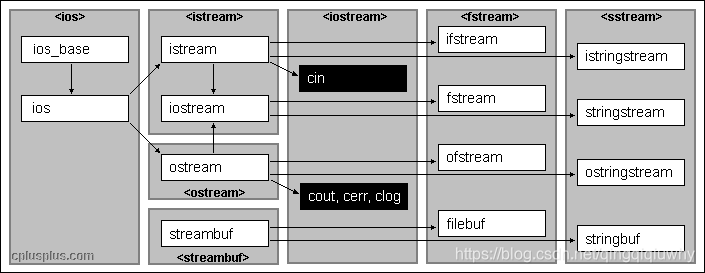C++ 与 python 读写文件txt
C++ 读写文件
ref
文件读写步骤一般是,打开文件,操作文件,关闭文件,一定要记得关闭文件。
头文件
#include
#include
类
fstream包含三个类,分别是:
ifstream—该数据类型表示输入文件流,用于从文件读取信息。
ofstream—该数据类型表示输出文件流,用于创建文件并向文件写入信息。
fstream—该数据类型通常表示文件流,且同时具有 ofstream 和 ifstream 两种功能,这意味着它可以创建文件,向文件写入信息,从文件读取信息。
文件指针位置
ios::beg 文件头
ios::end 文件尾
ios::cur 当前位置
例子:
fileObject.seekg( n ); // 定位到 fileObject 的第 n 个字节(假设是 ios::beg)
file.seekg(0,ios::beg); //让文件指针定位到文件开头
file.seekg(0,ios::end); //让文件指针定位到文件末尾
file.seekg(10,ios::cur); //让文件指针从当前位置向文件末方向移动10个字节
file.seekg(-10,ios::cur); //让文件指针从当前位置向文件开始方向移动10个字节
file.seekg(10,ios::beg); //让文件指针定位到离文件开头10个字节的位置
打开文件
void open(const char *filename, ios::openmode mode);
第二个参数,定义文件被打开的模式:
ios::app 追加模式。所有写入都追加到文件末尾。
ios::ate 文件打开后定位到文件末尾。
ios::in 打开文件用于读取。
ios::out 打开文件用于写入。
ios::trunc 如果该文件已经存在,其内容将在打开文件之前被截断,即把文件长度设为 0。
ios::binary 二进制方式。
以写入模式打开文件,并希望截断文件,以防文件已存在:
ofstream outfile;
outfile.open(“file.dat”, ios::out | ios::trunc );
写入文件
使用流插入运算符( << )向文件写入信息,就像使用该运算符输出信息到屏幕上一样。唯一不同的是,在这里您使用的是 ofstream 或 fstream 对象,而不是 cout 对象。
见下例
关闭文件
void close();
例子
#include
#include
using namespace std;
int main () {
char data[100];
// 以写模式打开文件
ofstream outfile;
outfile.open("afile.dat");
cout << "Writing to the file" << endl;
cout << "Enter your name: ";
cin.getline(data, 100);
// 向文件写入用户输入的数据
outfile << data << endl;
cout << "Enter your age: ";
cin >> data;
cin.ignore();
// 再次向文件写入用户输入的数据
outfile << data << endl;
// 关闭打开的文件
outfile.close();
// 以读模式打开文件
ifstream infile;
infile.open("afile.dat");
cout << "Reading from the file" << endl;
infile >> data;
// 在屏幕上写入数据
cout << data << endl;
// 再次从文件读取数据,并显示它
infile >> data;
cout << data << endl;
// 关闭打开的文件
infile.close();
return 0;
}
附
相关头文件关系
把string型的对象转换为int型的函数atoi
int atoi(const char*str);
由于所需要的参数是c风格的字符串,所以还需要把string对象转换为c中的字符串样式。在c语言中没有string类型,故必须通过string类对象的成员函数c_str()来实现。
time_h.push_back(atoi(t.substr(0, 2).c_str()));
Python读写文件
ref
打开关闭
f = open(“data.txt”,“r”) #设置文件对象
f.close() #关闭文件
with open(‘data.txt’,“r”) as f: #设置文件对象,可避免忘记关闭文件对象
str = f.read() #将txt文件的所有内容读入到字符串str中
读取文件
将文件读取到字符串中
f = open("data.txt","r") #设置文件对象
str = f.read() #将txt文件的所有内容读入到字符串str中
f.close() #将文件关闭
按行读取文件
法一
f = open("data.txt","r") #设置文件对象
line = f.readline()
line = line[:-1]
while line: #直到读取完文件
line = f.readline() #读取一行文件,包括换行符
line = line[:-1] #去掉换行符,也可以不去
f.close() #关闭文件
法二
data = []
for line in open("data.txt","r"): #设置文件对象并读取每一行文件
data.append(line) #将每一行文件加入到list中
法三
f = open("data.txt","r") #设置文件对象
data = f.readlines() #直接将文件中按行读到list里,效果与方法2一样
f.close() #关闭文件
按列读取文件
pandas的.read_csv
import pandas as pd
data = pd.read_csv(" OSDO1012.txt",sep=',',header=None, names=['lat','lon','time','z']
# 使用data.lat就可以读取名为lat这一列的数据
将文件读入数组中
data = np.loadtxt(“data.txt”,skiprows = 1) #将文件中数据加载到data数组里,并且跳过第一行
写文件
简单的将字符串写入txt中
with open(‘data.txt’,‘w’) as f: #设置文件对象
f.write(str) #将字符串写入文件中
列表写入文件
(1)单层列表
data = [‘a’,‘b’,‘c’]
单层列表写入文件
with open(“data.txt”,“w”) as f:
f.writelines(data)
(2)双层列表
第一种方法:
每一项用空格隔开,一个列表是一行写入文件
data =[ ['a','b','c'],['a','b','c'],['a','b','c']]
with open("data.txt","w") as f: #设置文件对象
for i in data: #对于双层列表中的数据
i = str(i).strip('[').strip(']').replace(',','').replace('\'','')+'\n' #将其中每一个列表规范化成字符串
f.write(i) #写入文件
第二种方法:
直接将每一项都写入文件
data =[ ['a','b','c'],['a','b','c'],['a','b','c']]
with open("data.txt","w") as f: #设置文件对象
for i in data: #对于双层列表中的数据
f.writelines(i) #写入文件
数组写入文件中
np.savetxt(“data.txt”,data) #将数组中数据写入到data.txt文件
或
np.save(“data.txt”,data) #将数组中数据写入到data.txt文件
